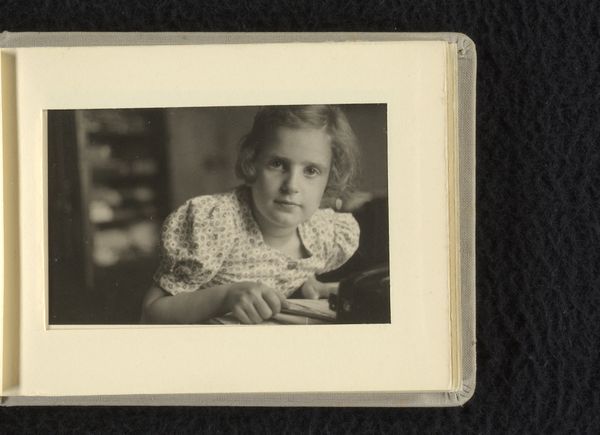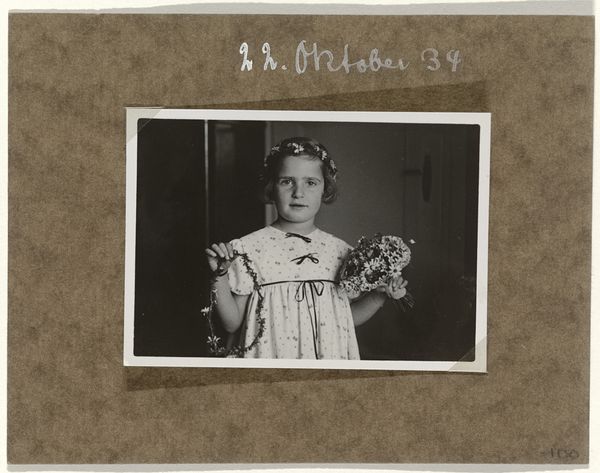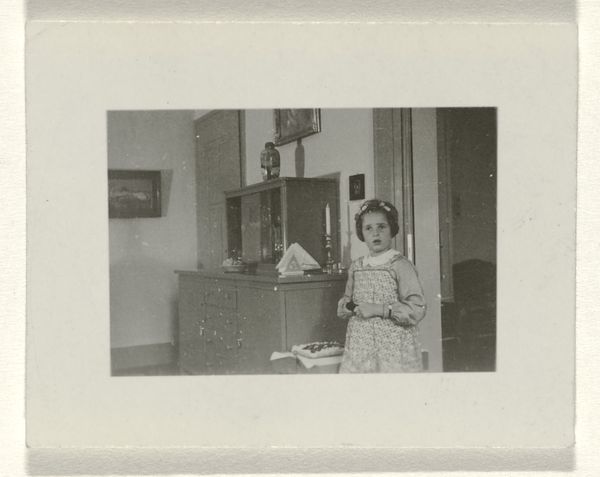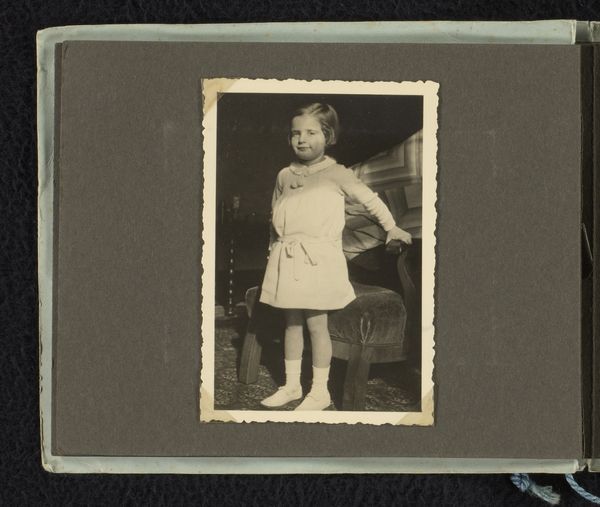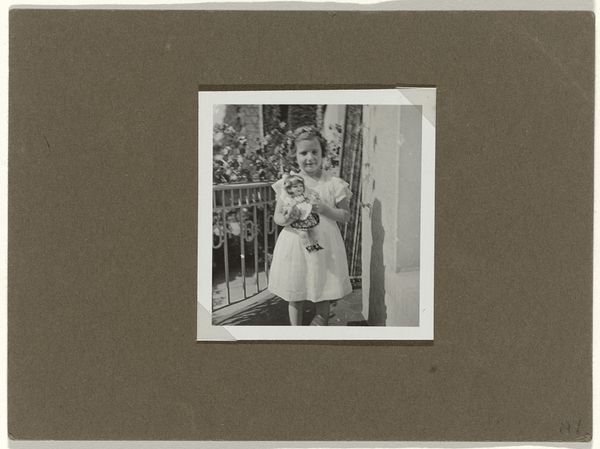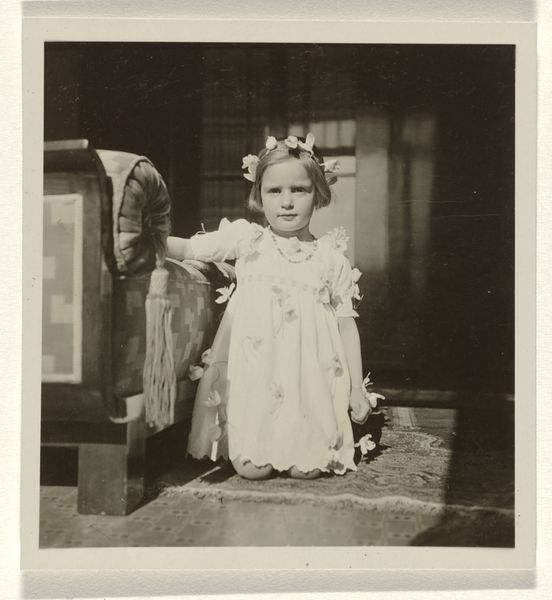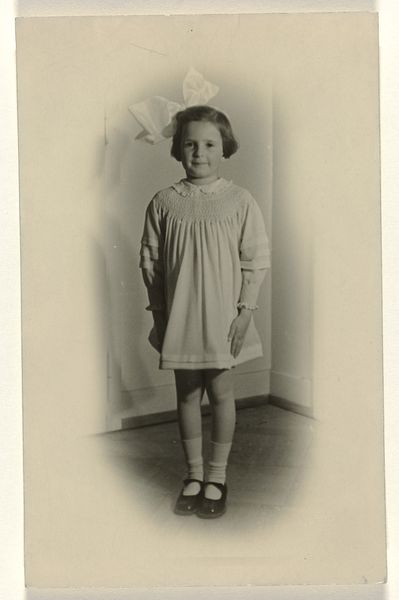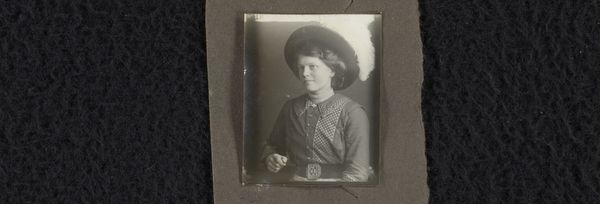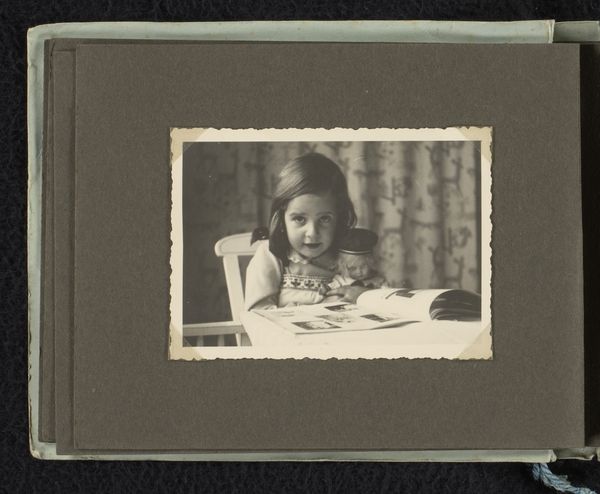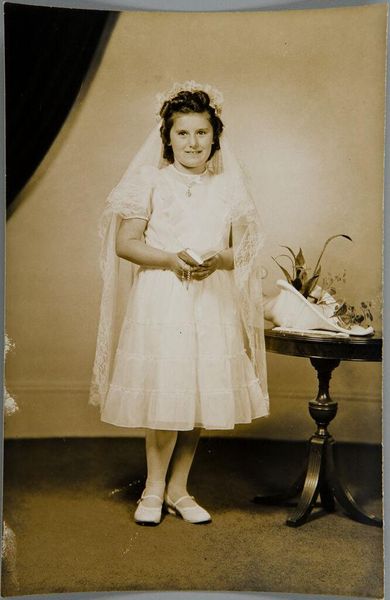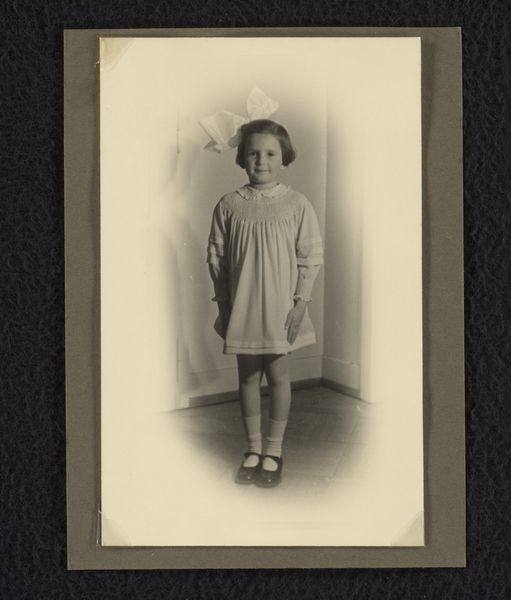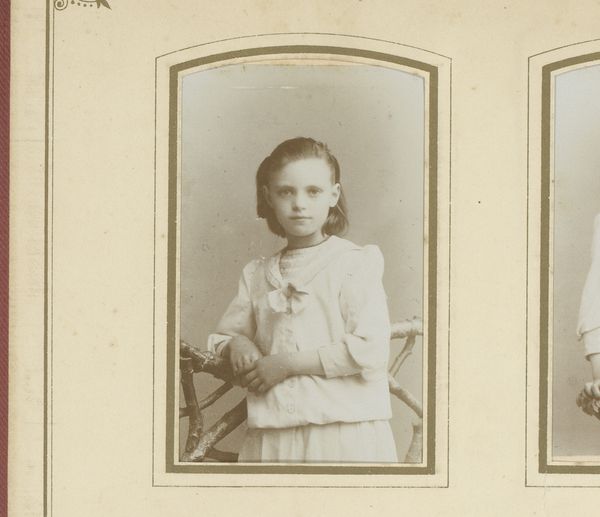
photography, gelatin-silver-print
#
portrait
#
still-life-photography
#
photography
#
gelatin-silver-print
#
realism
Dimensions: height 64 mm, width 90 mm
Copyright: Rijks Museum: Open Domain
Editor: This is a gelatin-silver print photograph, entitled "Isabel als bruidsmeisje," which translates to "Isabel as bridesmaid," possibly from 1934, from the Wachenheimer family. There’s a sense of formality, yet also innocence about the girl; her floral crown feels both celebratory and fragile. What draws your attention most about this image? Curator: It's fascinating how seemingly simple photographs become powerful carriers of cultural memory. This image, with Isabel adorned in flowers, speaks volumes about the roles assigned to girls, and the symbolism of innocence associated with them. The flowers themselves – notice the daisies in her bouquet and crown – traditionally represent purity, innocence, and new beginnings. Editor: It's interesting to consider the meaning of those flowers in particular. Were daisies a common motif in wedding imagery at the time? Curator: Yes, the consistent use of daisies in bridal imagery throughout history shows a powerful visual continuity. Consider the weight of the flower crown; a universal symbol, dating back to ancient Greece, and signifying victory, celebration, and purity, here resting on a child's head. But within the context of 1934, particularly if the Wachenheimer family were Jewish, this image might evoke a bittersweet premonition, given the historical events unfolding in Europe at the time. The perceived innocence contrasted against historical events generates poignant complexity. Editor: So, the image then takes on additional layers of meaning with the historical context? Curator: Precisely. The photograph is no longer simply a charming portrait of a child, but a layered visual text infused with historical weight, a quiet harbinger of lost innocence and the fragility of life. Editor: That's a perspective I hadn't considered. It really enriches how I now see the photograph. Curator: Indeed. Recognizing visual motifs helps us unpack layers within images that may not always be obvious, and invites broader inquiries into history and memory.
Comments
No comments
Be the first to comment and join the conversation on the ultimate creative platform.
